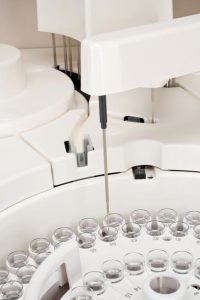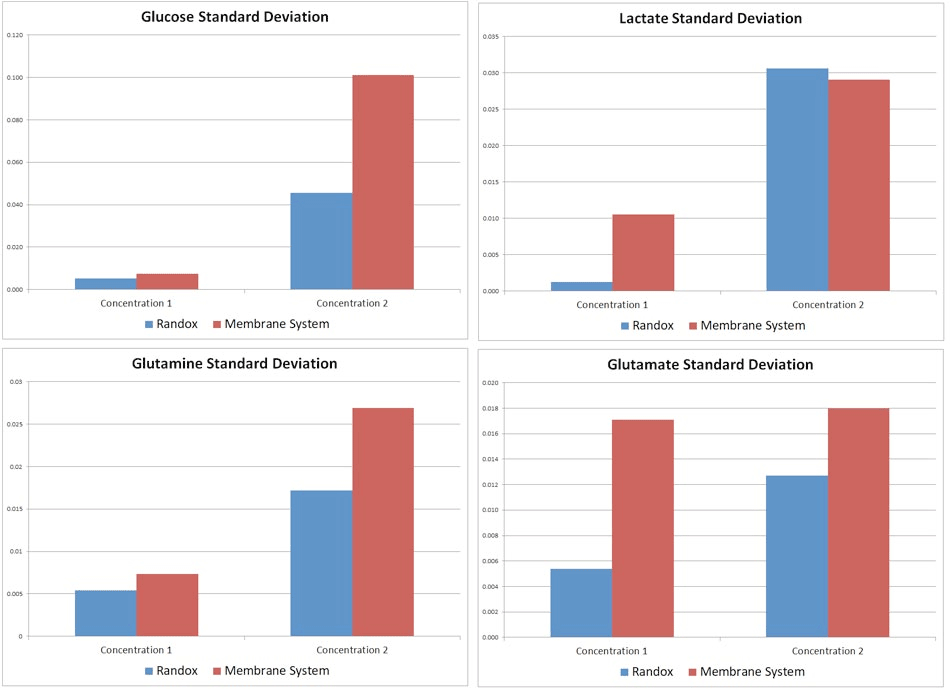Reports
Photometric Analysis Performance Advantages in Upstream Cell Culture Operations
Recombinant Therapeutic Proteins development and production operations require reliable and accurate biochemistry analyzers to characterize the cell culture process and maximize results through photometric analysis.
Traditional membrane based (electrochemical) analyzers still in use in many labs present multiple problems including measurement drift and the need of high frequency maintenance. An advanced, more accurate technology based on automated photometric analysis is being rapidly adopted by many leading organizations. Important cell culture parameters such as glucose, lactate, glutamate, glutamine, ammonia, LDH, & IgG, can now be measured with a higher level of confidence obtaining more accurate verifiable results. Many other specialized bio process assays are available as well including Magnesium, Cholesterol, Glycerol, Acetic Acid, Na, K, Chloride, Iron, ethanol, Phosphorus, total Protein, etc.
Photometric Analysis Technology Description
The Randox RX Series Instruments are in essence fully automatic pipetting systems integrated with a highly precise photometric analyzer.

Pipette arms are used to deliver a very small sample from each sample cup (2- 35 uL depending on the analysis) into measurement cuvettes and to inject the specific measurement reagent (100 to 200 uL) into the same cuvette. Each cuvette content is automatically mixed and incubated and the resulting reactive color is measured inside the photometric chamber. This process repeats every 10 to 15 seconds for each individual measurement and the analyzer provides an accurate determination of each metabolite concentration. Depending on model selected, up to 400 results/hour can be obtained. Multiple analytes can be measured on the same single sample and less than 300 uL are required for each single sample cup. Instruments can load up to 72 samples which makes them ideal for high throughput use.
Since pipetting accuracy is essential to optimize photometric measurement results, Randox RX Series Photometric Analyzers include special color testing routines that automatically dilute and measure certain color standards verifying the system’s accuracy and repeatability. This feature has proven to be highly valuable for GMP applications.
Additionally, specially formulated controls containing the composition of the analytes being measured are used to further verify optimal instrument performance for each assay.
For most analytes, Calibration needs to be performed very infrequently (every 2 – 3 weeks) improving work flow and efficiency. Furthermore, Multicalibrator material is provided, allowing a user to calibrate multiple assays at the same time.
Ease of Use
 Utilizing the RX Series Instruments for photometric analysis is very easy. The operator simply needs to load all the samples and assay reagents inside the respective sample and reagents carousels. Once that operation is completed, the instrument automatically identifies each reagent position by means of an optical bar code reader, saving time and eliminating the need of pre-configuration.
Utilizing the RX Series Instruments for photometric analysis is very easy. The operator simply needs to load all the samples and assay reagents inside the respective sample and reagents carousels. Once that operation is completed, the instrument automatically identifies each reagent position by means of an optical bar code reader, saving time and eliminating the need of pre-configuration.
A user friendly menu is then used to order the different measurements for each sample or group of samples. Once that selection is done, the system starts the measurement routine allowing the scientist to concentrate on other important tasks around the lab. When measurements are completed, a detailed report with measurement results is presented on the system’s computer screen, or easily exported to standard .CSV format. All the system measurement functions are automatic, including the auto dilution feature which allows measuring any sample outside of the analyzer’s normal range, eliminating time-consuming manual dilutions and assuring maximum precision.
Measurement Stability
To obtain the highest precision and stability over time, the Automated Photometric Technology relies on the Quality and Precision of the Pipetting System and the Photometric bench. These two critical sections of each instrument are verified with RANDOX certified Color and Control Materials. Additionally, no membranes or electrochemical sensors are used, eliminating common sources of measurement instability.
In laboratory studies using independent controls, the RX Series analyzer show significantly superior stability over time comparing with traditional membrane-based systems.
The below figures show a comparative study conducted for a period of two months for 4 critical assays at a mammalian cell culture facility:

View all of documentation and get more information about Cell Culture and Metabolite Analyzers, available through PROAnalytics.
Learn more about metabolite analyzers by reviewing our related article, Metabolite analysis in cell culture – Photometric analyzer vs membrane-based systems.
Contact us at ProAnalytics, LLC of Fairfield, New Jersey if you are interested in Cell Culture Analyzers or have any questions.
